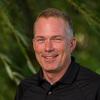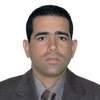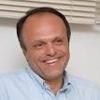Explore all the information on
Swine health
Pig diseases can be caused by bacteria, viruses, protozoa, nutritional deficiencies, poisonous substances, internal and external parasites.
Bacterial diseases include swine erysipelas, swine dysentery, infectious poly-arthritis etc. Viral and mycoplasma diseases include African swine fever, swine influenza, enzootic pneumonia of pigs, vesicular exanthema of swine, transmissible gastroenteritis etc. Helminthiasis as a health problem in pigs is mainly caused by worms like the lungworm, ascaris worm etc. Nutritional diseases include piglet anemia, parakeratosis etc. External parasitic infections include mange, lice, jiggers etc.
How to tell that a pig is in bad health:
General signs: dullness, loss of appetite, labored or rapid breathing, sudden deaths, loss of weight, low weight gain and fever usually manifested by shivering of the pig.
Signs expressed on the skin: reddening of the skin or skin discoloration, loss of hair and hardening of some parts of the skin, itching and cracking of the skin.
Other signs: lameness, cough, abnormal nasal discharges, diarrhea with a putrid smell, abnormal content and color of feces and abortions.
...
Comments : 1
Recommendations: 0
Introduction & objective: Post-weaning Escherichia coli diarrhea (PWD), also called post-weaning enteric colibacillosis, in pigs remains a major cause of economic losses for the pig industry, due to either piglet death, or poor weight gain in surviving piglets [1,2]. PWD typically causes mild to severe watery diarrhea between 5 and 10 days after weaning and is primarily caused by enterotoxigenic Escherichia coli (ETEC). The most common adhesins found on ETEC from PWD in pigs are...
Comments : 0
Recommendations: 0
The ban on growth promoters in feed of swine has led to an increase in infections with enteropathogens and as a result in increased use of antibiotics to treat these infections with increase in antibiotic resistance as a consequence. In the search for alternatives, ZnO was found to control the clinical signs of these infections, but its effect on antibiotic resistance and the environment has led to a ban on ZnO that will start in 2020. In the quest for alternatives, increasing resistance...
Comments : 0
Recommendations: 0
The world's food production system has responded magnificently to the need to dramatically increase production during the last few decades, to supply the growing human population of the world. But the challenge continues, driven by both the projected increase in population and the wonderful improvement in living standards and diet quality that will be the fortunate lot of many people in the developing world. The need to continue to increase food production with...
Comments : 3
Recommendations: 0


Effects of Dietary Protein Content and Crystalline Amino Acid Supplementation Patterns on Growth Performance of Weaned Pigs Raised Under Different Sanitary Conditions
Suggested link
Timothy Sellnow and Deanna Sellnow (University of Central Florida) explained how to effectively convey information in these circumstances, during 2019 NIAA Annual Conference: Animal Agriculture - Innovation, Technology and Consumer Engagement in Des Moines, Iowa, USA....
Comments : 0
Recommendations: 0
Elizabeth Parker (Texas A&M University) talked about several of these diseases and the actions to fight them, during the 2019 NIAA Annual Conference: Animal Agriculture - Innovation, Technology and Consumer Engagement in Des Moines, Iowa, USA....
Comments : 0
Recommendations: 1
Introduction Globalization has played an important role in the dissemination of diseases because it allows the mobilization of people, animals and products from one place to another in a short time1. In addition, population growth, deforestation, the introduction of exotic species, changes in land use, habitat fragmentation and alternative tourism have increased the possibility of contact with wild animals, and their consumption by human2. Interactions within the human-animal...
Comments : 0
Recommendations: 0
1. Introduction In-feed supplementation of antibiotics was firstly reported to promote growth in chickens (Moore et al., 1946) and subsequently in pigs (Jukes et al., 1950; Luecke et al., 1950). Since then, antibiotics have been routinely used in livestock production at subtherapeutic levels for disease prevention and growth promotion and are more commonly known as antibiotic growth promoters (Dibner and Richards, 2005). Unfortunately, continuous long-term exposure of gut...
Comments : 2
Recommendations: 2
Dr. Liz Wagstrom (National Pork Producers Council) talked about guidelines for responsible antibiotic use in the swine industry, during the 2018 NIAA Antibiotic Symposium....
Comments : 0
Recommendations: 0
Dr. Joel Nerem (Pipestone Veterinary Services) explained this producer program to analyze antibiotic resistance, during the 2018 NIAA Antibiotic Symposium....
Comments : 0
Recommendations: 2
INTRODUCTION Blood irrigation is supplied to the heart by the right coronary artery (RCA) and left coronary artery (LCA), which have their origin in the ascending aorta at the level of the respective right and left ostia. The high variation existing in the morphology of these vessels regarding their distribution in the irrigation of the posterior aspect of the heart serves as a basis for the coronary dominance concept (Cavalcanti et al., 1995; Ilia et al., 2001; Ballesteros et...
Comments : 0
Recommendations: 0
Large quantities of liquid effluents are generated during slaughtering and meat processing services related to cleaning equipment and associated facilities and the high levels of organic material in these effluents can severely pollute aquatic environments. Liquid residue processing regimes utilize biological treatment technologies preceded by physical-chemical treatments. Some of these pretreatments use traditional chemical surfactant formulations (based on sodium alkyl benzene...
Comments : 0
Recommendations: 0
Background There are three enteric coronaviruses that can cause gastrointestinal illness in young pigs e.g., transmissible gastroenteritis virus (TGEV), porcine epidemic diarrhea virus (PEDV), and porcine delta coronavirus (PDCoV) [1]. Transmissible gastroenteritis virus has been present in the United States since 1946, but PEDV and PDCoV were introduced more recently in 2013 and 2014, respectively. The spread of PEDV among swine herds was rapid; and strict biosecurity...
Comments : 0
Recommendations: 0
Swine neonatal diarrhea is one of the major causes of death and economic losses in swine production. The enterotoxigenic (ETEC), verotoxigenic (VTEC) and porcine enteropathogenic (PEPEC) strains are one of the most representative pathogenic variants of E. coli (9, 11, 12). There are a number of virulence factors associated with ETEC strains, such as the production of heat-labile (LT) and heat-stable (ST) toxins with two variants (STa and STb) (2). The mechanism of pathogenicity of ETEC...
Comments : 0
Recommendations: 0


Effects of Dietary Protein Content and Crystalline Amino Acid Supplementation Patterns on Growth Performance of Weaned Pigs Raised Under Different Sanitary Conditions
Suggested link
Researchers at the University of Missouri have successfully produced a litter of pigs that are genetically resistant to a deadly porcine virus.
Coronaviruses, highly contagious and widespread viruses known for their distinctive microscopic halos, are responsible for a variety of deadly intestinal diseases in livestock. One such virus, Transmissible Gastroenteritis Virus (TGEV), commonly infects the intestines of pigs, causing ...
Comments : 0
Recommendations: 1
The modern animal exploitation is characterized by a high productive intensity, regardless of the species. This makes the animals undergo constant stressing situations that may result into a higher frequency of disease appearance and decrease of productive levels (Hernández et al. 2015 and Jaque et al. 2015), being the gastrointestinal processes some of the most outstanding problems affecting the profitability of the exploitation system used. Due to the current intensive...
Comments : 0
Recommendations: 0
The epidemiological cycle of Trypanosoma cruzi involves humans, the transmitting arthropod, and a large number of different naturally infected mammals. Mammals play an important role as reservoirs, specifically due to their close relationship with triatomines. The importance of the three mammalian cycles, wild, peridomestic, and domestic is well known; however, the present study concentrates on the peridomestic cycle because it links the other two, favouring that transmission of the...
Comments : 0
Recommendations: 0
Introduction Hospital pens, or infirmary pens, are often used to facilitate the treatment of sick animals and separate them from those that are healthy (Fraser et al., 2013). In these pens, pigs are able to recover without competing with healthy animals for water, food, or rest areas (Pineiro et al., 2014). In Denmark, there is a law that specifies how a hospital pen should be designed, which addresses requirements, such as bedding material, cooling,...
Comments : 0
Recommendations: 1
Introduction Cereals are particularly susceptible to fungal contamination during both the pre- and postharvest stages. Many of these fungi are producers of mycotoxins, which are a chemically diverse group of secondary metabolites with a wide range of toxic effects (Bryden, 2012). The contamination of grain by mycotoxins represents a major concern worldwide in the pig production chain, since the effect of these toxins is to reduce animal performance (Andretta et al.,...
Comments : 5
Recommendations: 2
Dear Users, This is an interesting forum from our Spanish community, generated by Santiago Cabrera from Ecuador: What would be the picture of vaccination to immunize pregnant sows in order that the piglets at birth, are immune to various diseases that attack them?? For example on my farm I have problems Colibacillosis and pneumonia. What do you think?? ...
Comments : 2
Recommendations: 0








.jpg&w=3840&q=75)





















